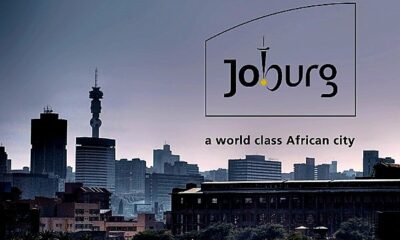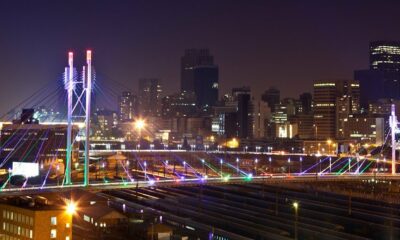News
R21 Billion a Month: The Massive Price Tag of Running South Africa’s Municipal Workforce

With staff costs topping R143 billion a year, questions are mounting about local government efficiency and priorities.
If you’ve ever wondered where your rates and taxes go, here’s a clue: a quarter of all municipal spending in South Africa goes to salaries. That’s R21 billion every month, just to keep the lights (and offices) on, even as some municipalities can’t keep the actual lights on or the taps running.
According to Statistics South Africa’s 2024 Financial Census of Municipalities, published this week, municipal governments spent a jaw-dropping R143 billion on staff salaries out of a total R561.1 billion in operating expenses last year.
That’s more than they spent on buying electricity, and far more than was spent on core service delivery like waste removal or water infrastructure, sparking growing public frustration over poor delivery in return for high costs.
Where the money’s going
The data shows that the three biggest drains on municipal budgets are:
-
Employee costs (25%)
-
Electricity purchases
-
Debt write-offs
Councillor costs often a target of criticism, came in as the smallest budget item, at under R1 billion in March 2025. For comparison, councillors collectively cost R967 million that month, while employee costs reached R21 billion, based on Stats SA’s quarterly snapshot.
Despite the outrage over local councillors’ pay, the average salary sits around R294,915 per year, according to Payscale, and there are 9,473 councillors in 213 municipalities.
Rising costs, sagging services
In the same breath, Stats SA’s reports paint a picture of rising operational costs and staggering debt. South Africa’s municipalities now owe creditors R385.8 billion, an increase of nearly 8% over the previous year.
On the revenue side, municipalities pulled in R576 billion last year. More than a quarter of that (27.2%) came from national government transfers, followed by electricity sales (25.7%), and property rates (16.4%).
What’s telling is that water sales grew by 7.9%, while volumes sold barely moved — increasing just 0.3%. This suggests massive water losses, likely through aging infrastructure and burst pipes, rather than consumer demand.
Who’s spending the most and least?
Some provinces are seeing particularly sharp jumps in spending:
-
North West led the pack with a 15.9% increase
-
Mpumalanga followed at 13.2%
-
Limpopo rose 10.8%
Meanwhile, more fiscally restrained provinces included:
-
Western Cape (2.8%)
-
Eastern Cape (4.1%)
But the real concern isn’t just how much municipalities are spending, it’s what they’re spending on. As the South African Local Government Association (SALGA) and National Treasury have long warned, bloated salary bills leave little room for infrastructure upgrades, maintenance, or emergency responses.
Public backlash and political pressure
On social media, residents are asking hard questions:
“So we’re paying more for less? We fund salary machines, not services!” – @Kabelo_JHB
Others called for a cap on salary expenditure relative to service delivery performance, especially in municipalities that fail to deliver basic needs like water and refuse collection.
The way forward: Slim down or sink?
Experts say the data should serve as a wake-up call for urgent municipal reform. Some suggest introducing performance-based contracts, cutting admin bloat, and modernising infrastructure to reduce service losses — especially in water and electricity.
With more than R21 billion spent every month on staff, South Africa’s municipalities face a difficult question: Can they afford to keep paying so much while delivering so little?
As the 2026 local government elections edge closer, residents will be watching and paying ,more than ever.
{Source: IOL}
Follow Joburg ETC on Facebook, Twitter , TikTok and Instagram
For more News in Johannesburg, visit joburgetc.com



























